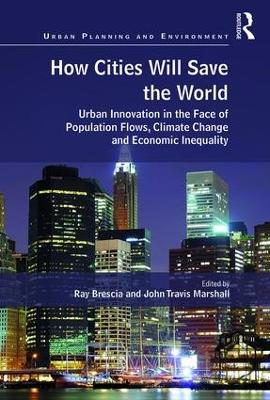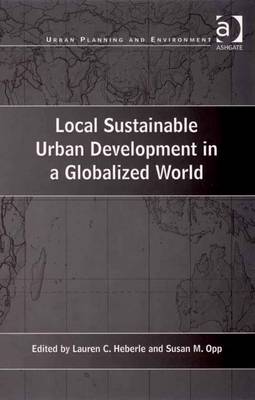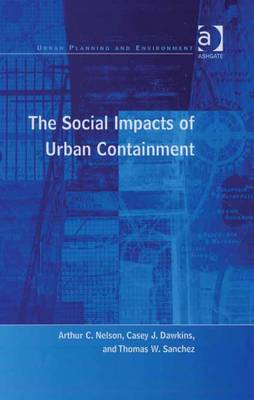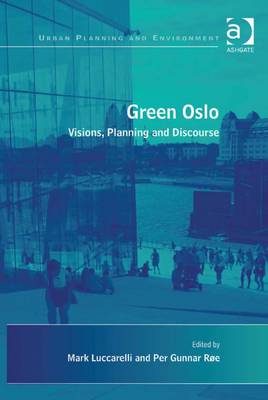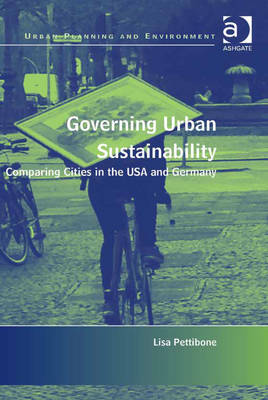Urban Planning and Environment
8 total works
Conflict and Change in Australia's Peri-Urban Landscapes
In an era of rapid urbanization, peri-urban areas are emerging as the fastest-growing regions in many countries. Generally considered as the space extending one hundred kilometres from the city fringe, peri-urban areas are contested and subject to a wide range of uses such as residential development, productive farming, water catchments, forestry, mineral and stone extraction and tourism and recreation. Whilst the peri-urban space is valued for offering a unique ambiance and lifestyle, it is often highly vulnerable to bushfire and loss of biodiversity and vegetation along with threats to farming and food security in highly productive areas.
Drawing together leading researchers and practitioners, this volume provides an interdisciplinary contribution to our knowledge and understanding of how peri-urban areas are being shaped in Australia through a focus on four overarching themes: Peri-urban Conceptualizations; Governance and Planning; Land Use and Food Production; and Solutions and Representations. Whilst the case studies focus on Australia, they advance a variety of tools useful in discerning processes and impacts of peri-urban change globally. Furthermore, the findings are instructive of the issues and tensions commonly encountered in rapidly urbanizing peri-urban areas throughout the world, from landscape valuation and biosecurity concerns to functional adaptation and social change.
Local Sustainable Urban Development in a Globalized World
'Sustainable development' is a key issue of concern to urban planners across the globe. How it is defined, implemented and measured at the local level remains highly contested and subject to a wide range of external cultural, political and economic pressures. Bringing together leading experts from North America, Europe, the Middle East and SE Asia, this book provides a timely overview of the various methods for understanding and implementing sustainable practices at local levels. In doing so, they present the wide range of local action alternatives available to planners that may be pursued in spite of the constraints generated by globalization processes and highlight the array of public policy options that could reduce the external pressures shaping the possible local alternatives.
The book argues that, while local planners and local authorities are willing to act, many are unaware of the range of options available to them. In bringing together these case studies, not only diverse in geographic terms, but also reflecting very different levels of income, general population education, cultural norms, legal systems and government structures, it points out innovations and examples of best practice.
The Social Impacts of Urban Containment
by Arthur C. Nelson, Thomas W. Sanchez, and Casey J. Dawkins
One of the policies that has been most widely used to try to limit urban sprawl has been that of urban containment. These policies are planning controls limiting the growth of cities in an attempt to preserve open rural uses, such as habitat, agriculture and forestry, in urban regions.
While there has been a substantial amount of research into these urban containment policies, most have focused on issues of land use, consumption, transportation impacts or economic development issues. This book examines the effects of urban containment policies on key social issues, such as housing, wealth building and creation, racial segregation and gentrification. It argues that, while the policies make important contributions to environmental sustainability, they also affect affordability for all the economic groups of citizens aside from the most wealthy. However, it also puts forward suggestions for revising such policies to counter these possible negative social impacts. As such, it will be valuable reading for scholars of environmental planning, social policy and regional development, as well as for policy makers.
Green Oslo
As urban regions face the demand to decrease fossil fuel dependency, many cities in the developing world are undertaking initiatives designed to create a greener city by aiming for a more sustainable form of urban development and, to do so, they need to evaluate existing modes of transportation and patterns of land use.
Focusing on Oslo, an early leader in urban environmental policy making and a European 'green city' award winner, it argues that this evaluation must adopt and integrate two approaches: firstly, as a process of ecological modernization based on a combination of transit, densification, and mixed use development and secondly, as an opportunity to reconsider the character and substance of the built environment as a reflection of natural values, landscapes and natural resources of the wider region.
Environmental debate and concern is widespread in Oslo, and this is reflected in its earlier planning decisions to leave intact large forest reserves, its successful ecological restoration of the Oslo fjord, the importance of outdoor culture among its residents, the relatively progressive political agenda of Norway, This book provides an opportunity for a critical assessment of the limitations and opportunities inherent in 'green Oslo' and suggests the need for much broader integrative approaches. It concludes by highlighting lessons which other cities might learn from Oslo.
Growth Management in Florida
Despite its historical significance and its state-mandated comprehensive planning approach, the Florida growth management experiment has received only piecemeal attention from researchers. Drawing together contributions from national experts on land use planning and growth management, this volume assesses the outcomes of Florida’s approach for managing growth. As Florida’s approach is the most detailed system for managing growth in the United States, this book will be of great value to planners. The strengths and weaknesses of the state’s approach are identified, providing insights into how to manage land use change in a state continuously inundated by growth. In evaluating the successes and failures of the Florida approach, planners and policy makers will gain insights into how to successfully implement growth management policies at both the state and local level.
Growth Management and Public Land Acquisition
Bringing together a team of national experts, this volume offers a detailed look at the links between public land acquisition programs and efforts to yield smart growth outcomes in the USA. Both public land acquisition programs and state and local growth management efforts have been examined in detail, but while there is growing recognition that land acquisition can play an important role in smart growth outcomes, there has so far been little research into the nexus of these areas of public policy. This book investigates various aspects of the land acquisition-smart growth linkage and describes model programs and makes recommendations for the adoption of land acquisition efforts nationally and internationally. It will appeal to practising planners, policy makers, public officials, and citizen groups, as well as academics of urban planning, environmental studies, geography and other disciplines which examine issues of urban sprawl.
In her study of the interactions between tools of urban sustainability governance in key cities, Lisa Pettibone argues that a new factor-sustainability-minded groups-may be critical to building momentum for sustainability. The book presents in-depth case studies of six cities in the USA and Germany: New York, Portland, Seattle, Berlin, Hamburg, and Heidelburg. Drawing on 75 interviews, document analysis, and a bilingual literature review, the book analyzes how sustainability is politically constructed in city strategic plans and sustainability indicators. The volume provides a comprehensive introduction to the principles of sustainability, discusses the key governance instruments relevant to urban sustainability, and delivers new empirical and theoretical material on their role in a sustainability transition. It concludes that despite the national-level differences, cities' experiences in both countries are similar. Political sustainability at the city level differs in several important ways from academic principles of sustainability. Finally, it proposes that sustainability-minded groups may be a key link to connect urban sustainability in practice to theoretical concepts.
